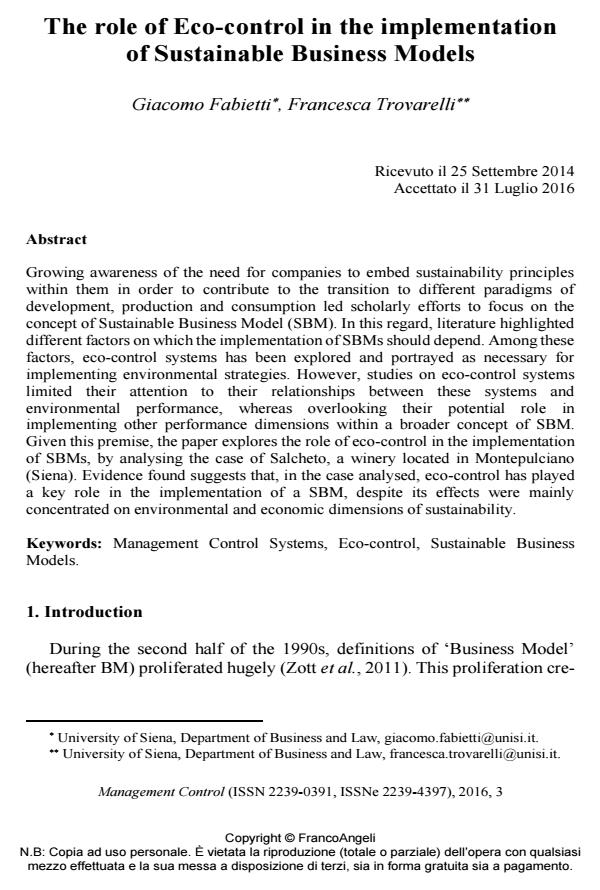The role of Eco-control in the implementation of Sustainable Business Models
Journal title MANAGEMENT CONTROL
Author/s Giacomo Fabietti, Francesca Trovarelli
Publishing Year 2016 Issue 2016/3
Language English Pages 32 P. 141-172 File size 575 KB
DOI 10.3280/MACO2016-003008
DOI is like a bar code for intellectual property: to have more infomation
click here
Below, you can see the article first page
If you want to buy this article in PDF format, you can do it, following the instructions to buy download credits

FrancoAngeli is member of Publishers International Linking Association, Inc (PILA), a not-for-profit association which run the CrossRef service enabling links to and from online scholarly content.
Growing awareness of the need for companies to embed sustainability principles within them in order to contribute to the transition to different paradigms of development, production and consumption led scholarly efforts to focus on the concept of Sustainable Business Model (SBM). In this regard, literature highlighted different factors on which the implementation of SBMs should depend. Among these factors, eco-control systems has been explored and portrayed as necessary for implementing environmental strategies. However, studies on eco-control systems limited their attention to their relationships between these systems and environmental performance, whereas overlooking their potential role in implementing other performance dimensions within a broader concept of SBM. Given this premise, the paper explores the role of eco-control in the implementation of SBMs, by analysing the case of Salcheto, a winery located in Montepulciano (Siena). Evidence found suggests that, in the case analysed, eco-control has played a key role in the implementation of a SBM, despite its effects were mainly concentrated on environmental and economic dimensions of sustainability.
Keywords: Management Control Systems, Eco-control, Sustainable Business Models.
Giacomo Fabietti, Francesca Trovarelli, The role of Eco-control in the implementation of Sustainable Business Models in "MANAGEMENT CONTROL" 3/2016, pp 141-172, DOI: 10.3280/MACO2016-003008